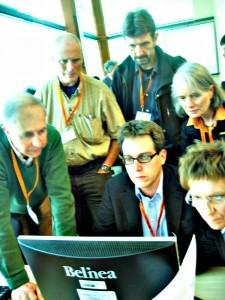 eViP aims to create a bank of over 320 enriched and repurposed virtual patients for use in the medical learning community. As institutions who wish to share digital content, one of the major challenges we face is the surrounding Intellectual Property Rights (IPRs), particular copyright law, confidentiality and patient consent.
eViP aims to create a bank of over 320 enriched and repurposed virtual patients for use in the medical learning community. As institutions who wish to share digital content, one of the major challenges we face is the surrounding Intellectual Property Rights (IPRs), particular copyright law, confidentiality and patient consent.
The laws governing copyright, patient privacy and consent differ from country to country, which poses even greater challenge to the eViP programme.
Why share Virtual Patients?
Opportunities for student-patient contact are critical for learning clinical competencies, yet these opportunities are declining in most EU Member States.Training is hampered by many factors:
- The healthcare budget constraints that increasingly limit clinical teaching;
- The reduction in the time the patient stays in hospital;
- The increase in regulatory restrictions in medical care; and
- A greater level of expertise required before exposure to live patients – learning by ‘trial and error’ is simply not an option!
Medical schools, and schools within other health care disciplines, are increasingly turning to digital technology to develop innovative methods for teaching and education. Virtual Patients are recognised by the medical and healthcare community as effective tools due to their ability to mimic real-life scenarios that allow students to make clinical decisions in a safe virtual envirnonment.
However, creating Virtual Patients ‘from scratch’ can be very costly and time consuming. Even leading e-learning institutions are unable to produce a sufficient number to give full coverage of the medical healthcare curricula.
A possible solution is for e-learning institutions to share existing Virtual Patients, an option currently being explored by the eViP programme.
Why use a Creative Commons License?
Any programme aimed at sharing work across several jurisdictions faces the challenges of having a mutually agreed system for this sharing. This system must clarify the following:
- How to share existing works – in our case, Virtual Patients
- How to share works that are jointly created or repurposed
Transparency and a good understanding of differences between partnering countries is key, especially concerning potential obstancles and institutional/legal changes.
At eViP we decided to implement a Creative Commons License (CCL). This model is simple and robust and ensures all new and repurposed digital content is used in the right way, with copyright and IP acknowledgment to the source or repurposed source.
A CC license lets individuals dictate how others may use their work. It also allows individuals to keep their copyright but allows others to copy and distribute the work, provided they give credit and only on the conditions the individual specifies.
![]() Listen to Dr Angela Miller from St George’s University of London talk about the legal challenges of eViP
Listen to Dr Angela Miller from St George’s University of London talk about the legal challenges of eViP
How does the eViP Creative Commons License work?
With the eViP licensing model, consented information recieves a unique identifier. It is then introduced into the eViP refractory (central pool) with predefined licensing terms.
The licensing terms of an eViP Virtual Patient that is created from repurposed information (a ‘derivative VP’) will be limited by the terms of the most limited resource.
For further information about Creative Commons License visit the ccLearn website.
